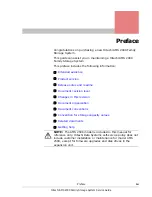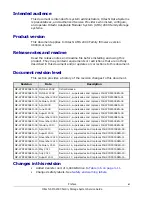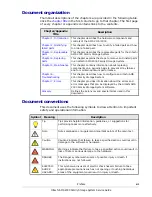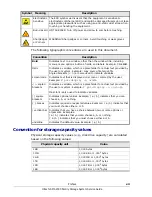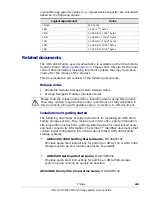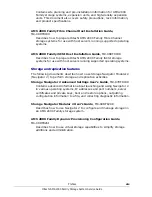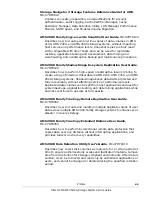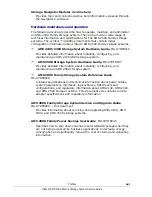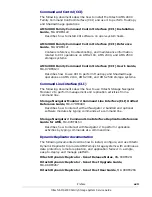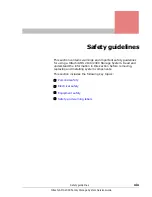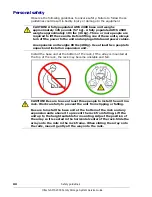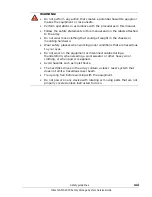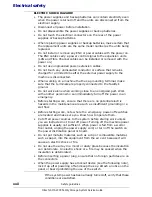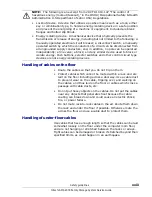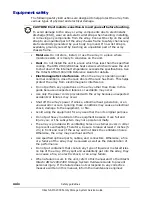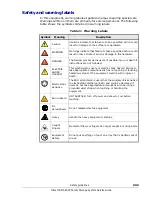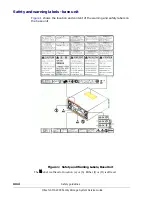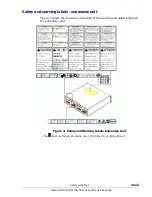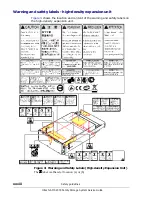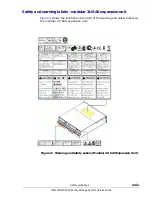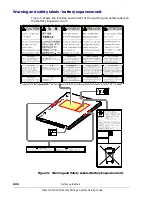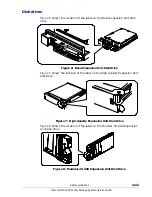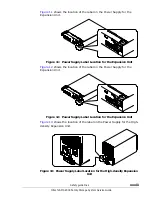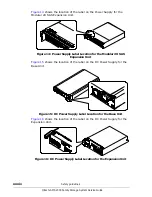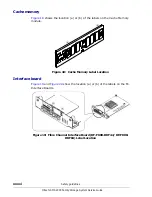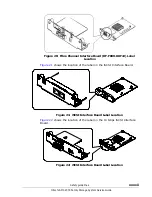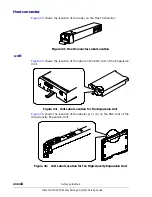
Safety guidelines
xxiii
Hitachi AMS 2000 Family Storage System Service Guide
•
Handling of cables on the floor
• Route the cables so that you do not trip on them.
• Protect cables which cannot be routed within a rack and are
laid on the floor including across a doorway. Use a cable duct
to prevent wear on the cable, tripping over, and walking on
the cables. and thus laid on the floor or cables which cross a
passage with cable ducts, etc.
• Do not put heavy objects on the cables. Do not put the cables
near any objects that generates heat because the cable
coating can break down and could cause an electric shock,
fire, or power failure.
• Do not route rack-to-rack cables in the air. Route them down
the rack and under the floor if possible. Otherwise route the
across the floor and use a cable duct to protect them.
Handling of under-floor cables
Use cables that have enough length so that the cables can be laid
somewhat loosely on the floor under the computer room floor,
and are not hanging or stretched between the racks or arrays.
Tight cables can be damaged or broken if stretched beyond their
specified limits, as could happen in an earthquake.
NOTE: The following is an excerpt from 29 CFR 1910.147 “The control of
hazardous energy (lockout/takeout),” in the OSHA (Occupational Safety & Health
Administration U.S Department of Labor USA) Regulations.
• Lockout device. A device that utilizes a positive means such as a lock, either
key or combination type, to hold an energy isolating device in a safe position
and prevent the energizing of a machine or equipment. Included are blank
flanges and bolted slip blinds.
• Energy isolating device. A mechanical device that physically prevents the
transmission or release of energy, including but not limited to the following: A
manually operated electrical circuit breaker; a disconnect switch, a manually
operated switch by which the conductors of a circuit can be disconnected from
all ungrounded supply conductors, and, in addition, no pole can be operated
independently; a line valve; a block; and any similar device used to block or
isolate energy. Push buttons, selector switches and other control circuit type
devices are not energy isolating devices.
Summary of Contents for AMS 2100
Page 8: ...viii Contents Hitachi AMS 2000 Family Storage System Service Guide ...
Page 98: ...3 6 Replaceable parts Hitachi AMS 2000 Family Storage System Service Guide ...
Page 158: ...5 10 Maintenance Hitachi AMS 2000 Family Storage System Service Guide ...
Page 182: ...7 8 Errors Hitachi AMS 2000 Family Storage System Service Guide ...
Page 191: ...Hitachi AMS 2000 Family Storage System Service Guide ...

